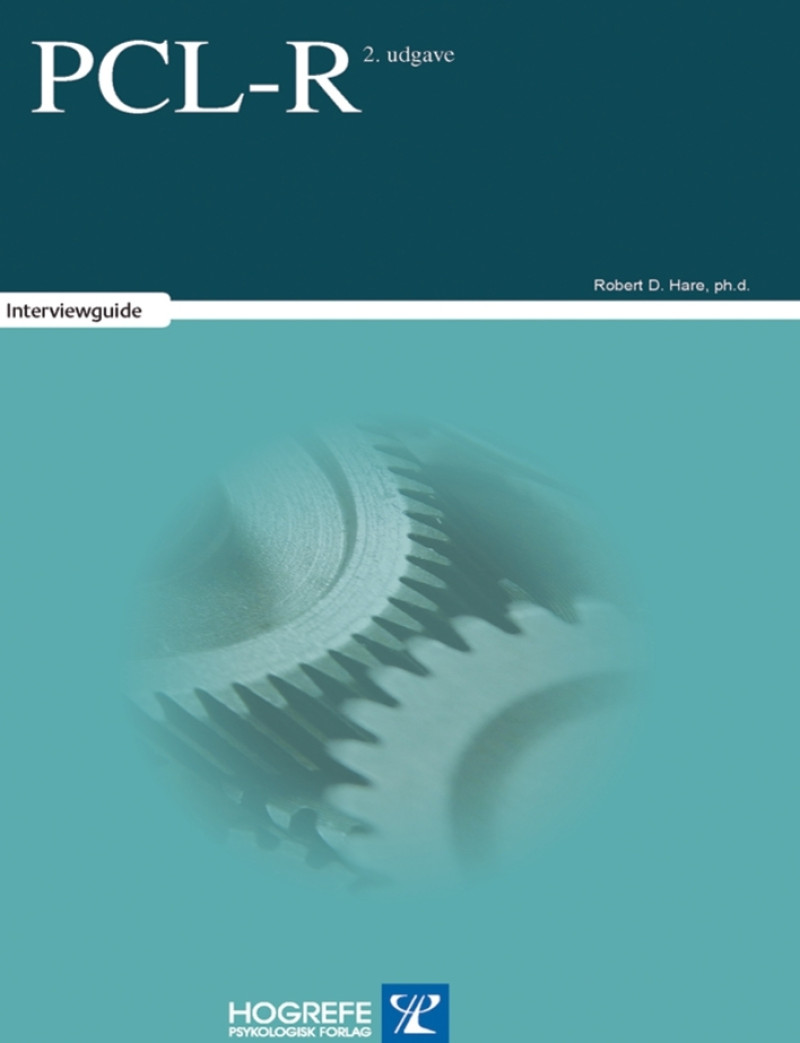

Hare's Psychopathy Checklist-Revised (PCL-R) is a psycho-diagnostic tool commonly used to assess Psychopathy. In contemporary research and clinical practice, Robert D. Therefore, although in popular culture the term is common, it had little relevance to criminology, forensic psychology or psychiatry. Natural Born Killers) and is often applied to the mass sexual killer, and for this reason the imprecise popular use had been deplored. The label "psychopath" as used by Cleckley had been embraced by popular culture (e.g. Later two items were removed from the checklist in order to more clearly represent the structure of a two-factor analysis. Robert Hare developed a Psychopathy Checklist based on the psychopath construct developed by Cleckley. The DSM-III committee, in attempting to develop a trait-oriented basis for the antisocial personality diagnosis, made efforts to combine the work of Lee Robbins's (1966) criteria of behavioral acts with trait items based on the work of Cleckley, as his list of core traits still remains relevant. Cleckley is very clear that there are important distinctions between the psychopath and the average criminal: For example, the classic alcoholic drinks to avoid reality, to escape unpleasant feelings of failure or inferiority, while the psychopath drinks simply to get himself in trouble. Cleckley characterizes the psychopath as, despite apparent intelligence, seeming to deliberately court failure and disaster for no obvious reason, what Cleckley calls a social and spiritual suicide, or semi-suicide.

The psychopath does not suffer from any obvious mental disorder. In summary, Cleckley clearly distinguishes the psychopath from other disorders such as neurotic alcoholics, psychoneurotics, criminal sex offenders and typical criminals. Starting in 1972, newer editions of the book reflected a closer alliance with Kernberg's (1984) borderline level of personality organization, specifically defining the structural criteria of the psychopath's identity integration, defensive operations and reality testing. Some of the criteria have obvious psychodynamic implications, such as a lack of remorse, poor judgment, failure to learn from experience, pathological egocentricity, lack of capacity for love, a general poverty in major affective reactions, and lack of insight into his own condition. Sex life impersonal, trivial, and poorly integrated.Fantastic and uninviting behavior with drink and sometimes without.Unresponsiveness in general interpersonal relations.General poverty in major affective reactions.Pathologic egocentricity and incapacity for love.Poor judgment and failure to learn by experience.

Inadequately motivated antisocial behavior.Absence of "nervousness" or psychoneurotic manifestations.Absence of delusions and other signs of irrational thinking.Superficial charm and good "intelligence".In The Mask of Sanity Cleckley introduced sixteen behavioral characteristics of a psychopath that he derived from clinical interviews and other corroborating sources. The seminal 20th century work on the subject is Hervey Cleckley's The Mask of Sanity first published in 1941. Cleckley offered a broad range of case histories, from all corners of society, all of which showed patients with the common characteristic of "emotional emptiness." Cleckley probed the psychopath's attitudes and thought patterns in search of a meaning for their unusual behaviour however, according to Robert Hare, Cleckley's most important contribution was in providing the framework of emotion for most future research into this disorder. The next most distinctive work on what were then called psychopaths was done in 1941 by Hervey Cleckley in his book The Mask of Sanity (significantly expanded in the second edition of 1950). The 19th century term used for such individuals was "moral imbecile".

Pinel felt that his patients were morally neutral, reflecting his humanistic approach to mental illness. Pinel described patients as "insane without delirium," which he characterized as a lack of restraint and remorselessness for their actions. Research into a group of individuals he described as psychopathic was first completed by Philippe Pinel almost 200 years ago.


 0 kommentar(er)
0 kommentar(er)
